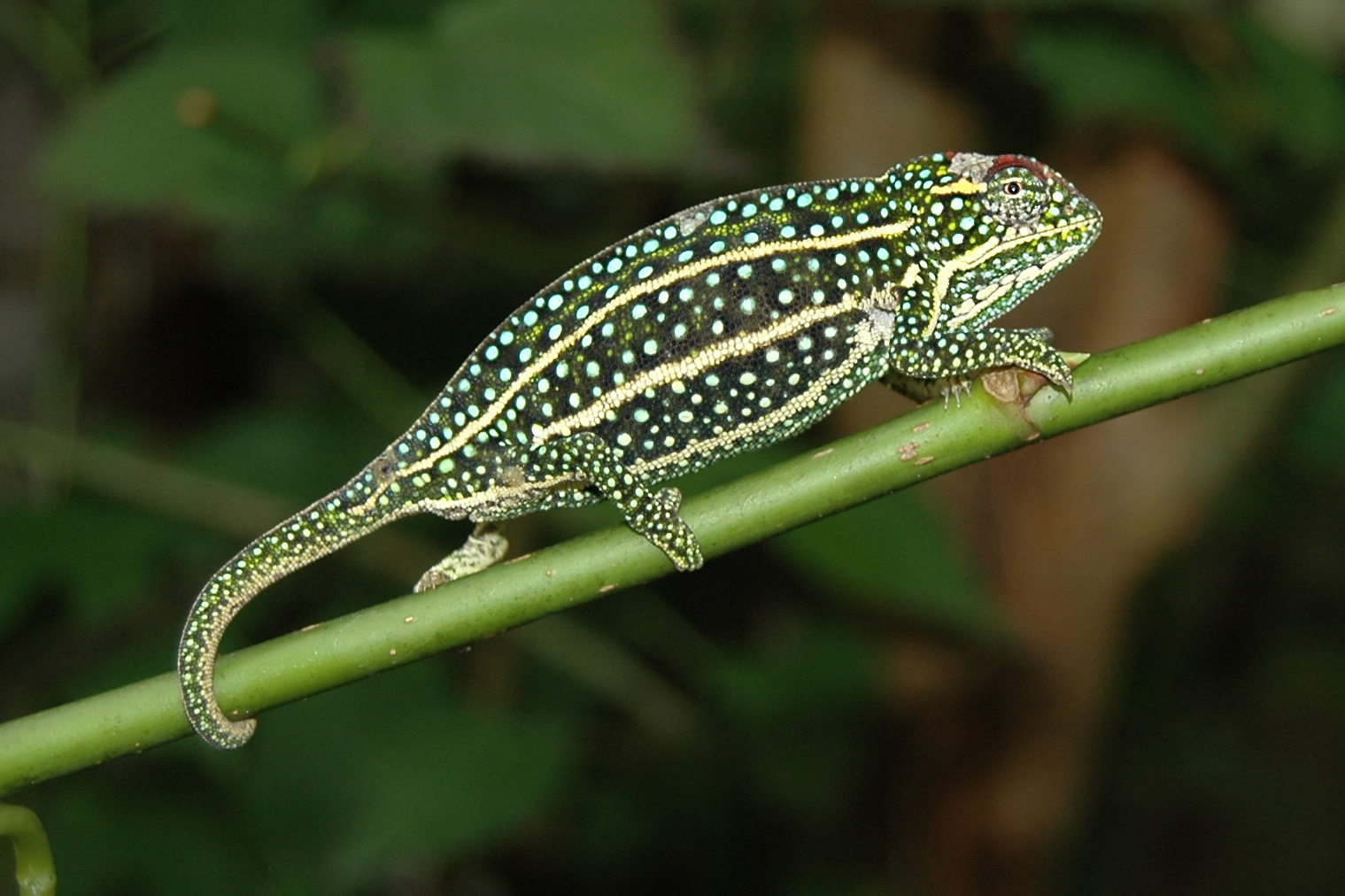The term microbiome has been very popular for some years now. In humans and animals, it refers to the totality of all microorganisms that colonise a living being. Most of them colonise the gastrointestinal tract. In the case of chameleons, there is only very limited literature on this topic. A master’s thesis from South Africa now deals with the bacterial composition of the microbiome in South African dwarf chameleons of the genus Bradypodion.
60 cheek swabs were collected from wild chameleons in KwaZulu-Natal. Of these, 20 were cheek swabs from Bradypodion melanocephalum, 20 from Bradypodion thamnobates and 20 from Bradypodion setaroi. After sampling, the same 60 animals were transported in cloth bags to the research base, where the animals were kept in 3.3 l boxes for 24 hours to obtain faecal samples. Since not all of the original 60 chameleons defecated, faeces were collected from additional chameleons.
The samples were all genetically tested. 40.43% of the samples contained Firmicutes, a similarly large proportion of the samples contained Proteobacteria with 36.86%. Bacteroidota followed with some distance, which could be detected in just under 16% of the samples. Verrucomicrobiota, Fusobacteriota, Actinobateriota, Spirochetes, Desulfobacteroa, Cyanobacteria, Thermoplamatota, Deferribacterota, Synergistota, Campylobacterota, Deinococcota, Halobacterota, Euryarchaeota, Elusimicrobiota and Myxococcota were found in significantly smaller numbers (up to 2%).
The microbiome of dwarf chameleons of the species Bradypodion melanocephalum, Bradypodion thamnobates and Bradypodion setaroi is similar to that of other reptiles. It consists mainly of proteobacteria and firmicutes, which may contribute to digestion. One particular bacterial species also suggests that the diet of the studied dwarf chameleons may include beetles of the genus Dendrophagus. The microbiome of all three dwarf chameleon species was very similar in the cheek swabs – this is called phylosymbiosis – while there were differences in composition between the species in the faeces. In all three dwarf chameleon species, significantly more different bacteria were found in the faeces than in the cheek swabs. A comparison between males and females did not reveal any significant differences in the microbiome of all three chameleon species. The author assumes that the bacterial species depend on the different habitats of the respective species. It is still unclear to what extent the microbiome is related to bacteria that a chameleon may ingest with feeding insects or from the soil of its environment. A detailed list of the bacterial species found can be found in the appendix of the publication.
The Hitchhiker’s Guide to dwarf chameleons (Bradypodion): The composition and function of the microbiome
Matthew G. Adair
Master of Science dissertation at the university of Johannesburg, 2023
DOI: not available



